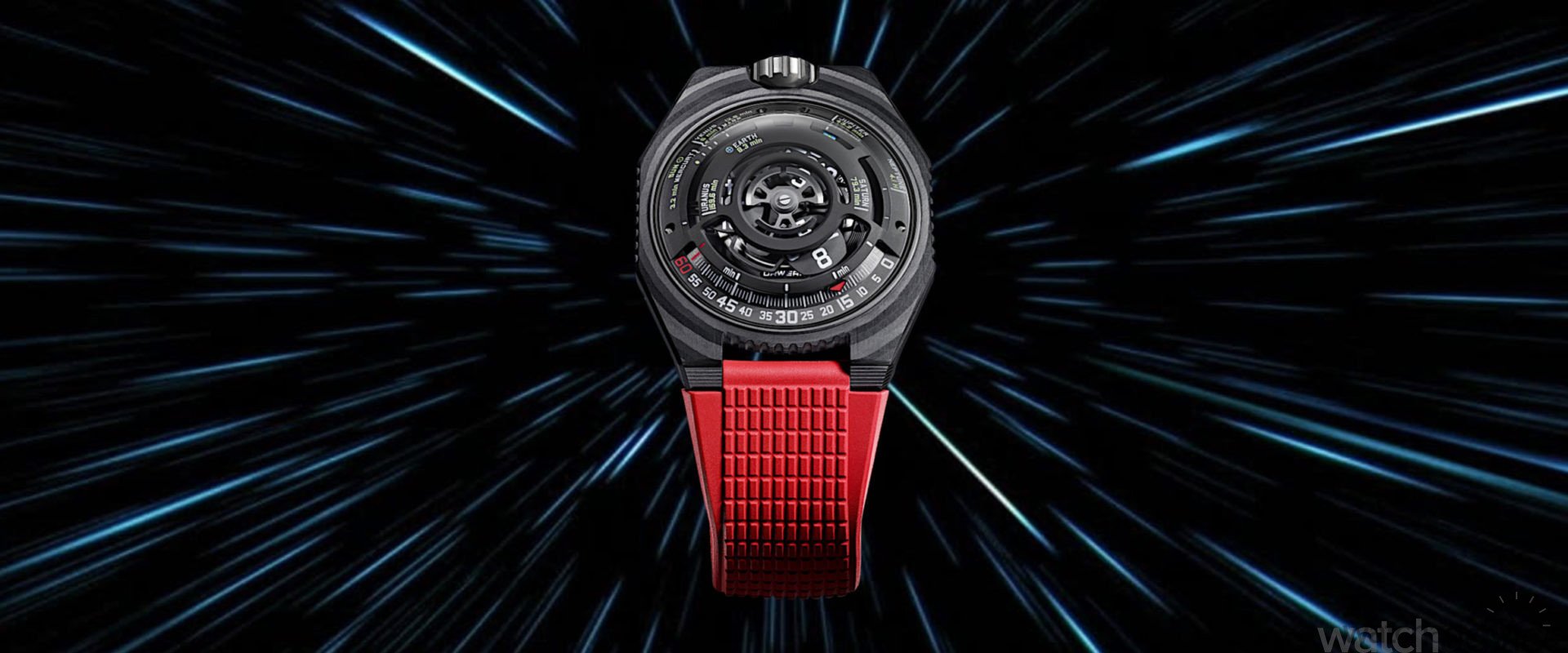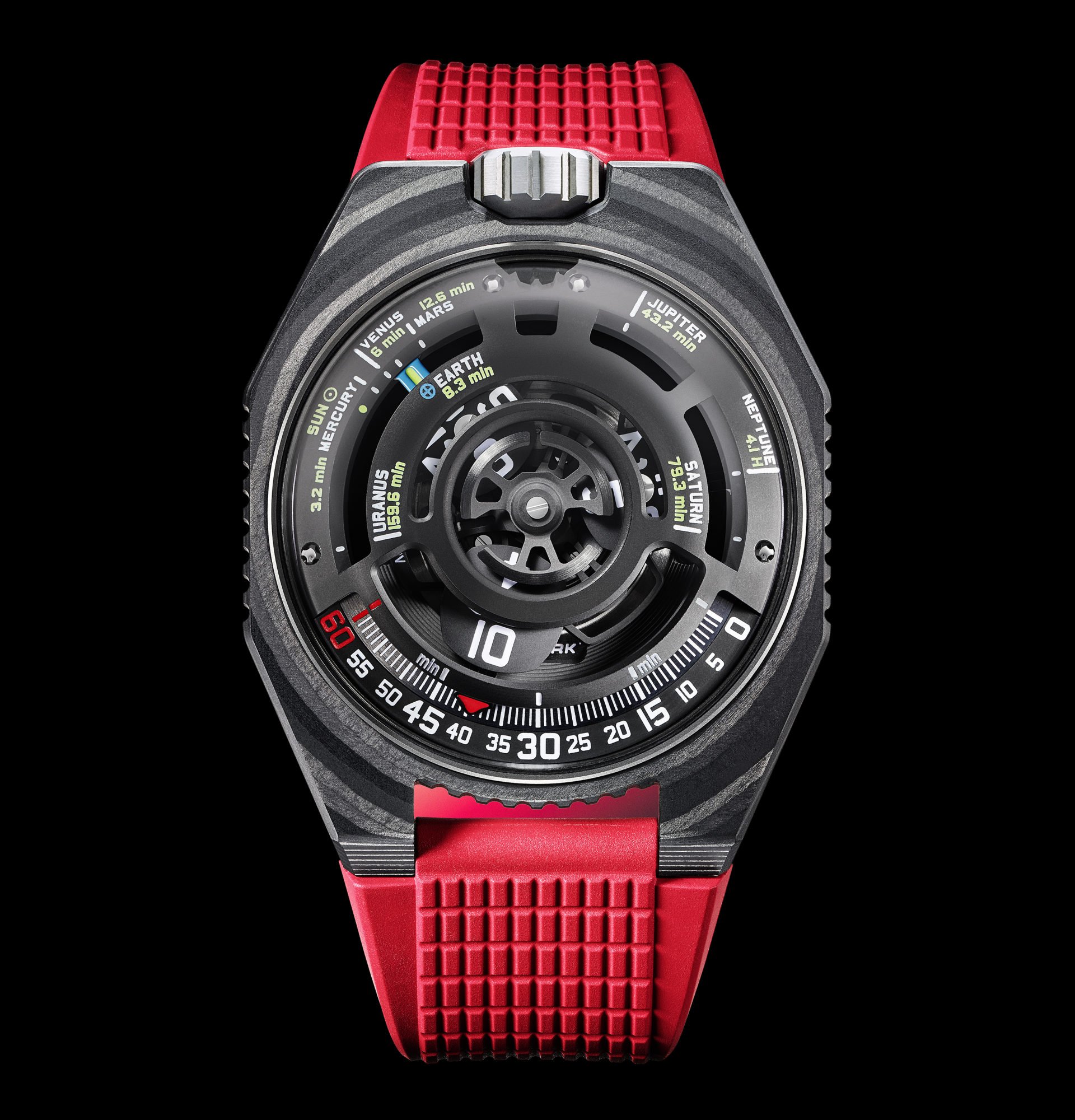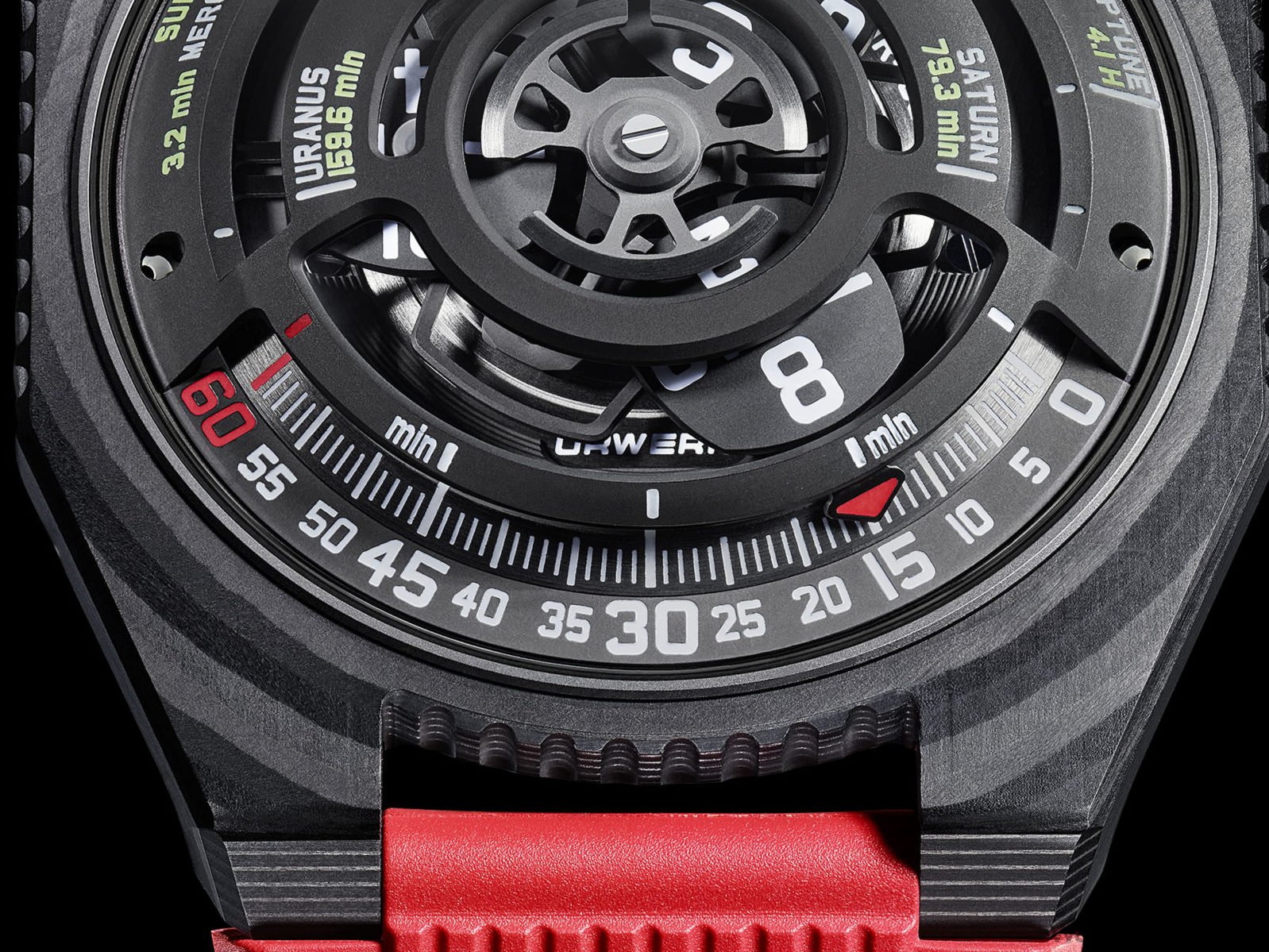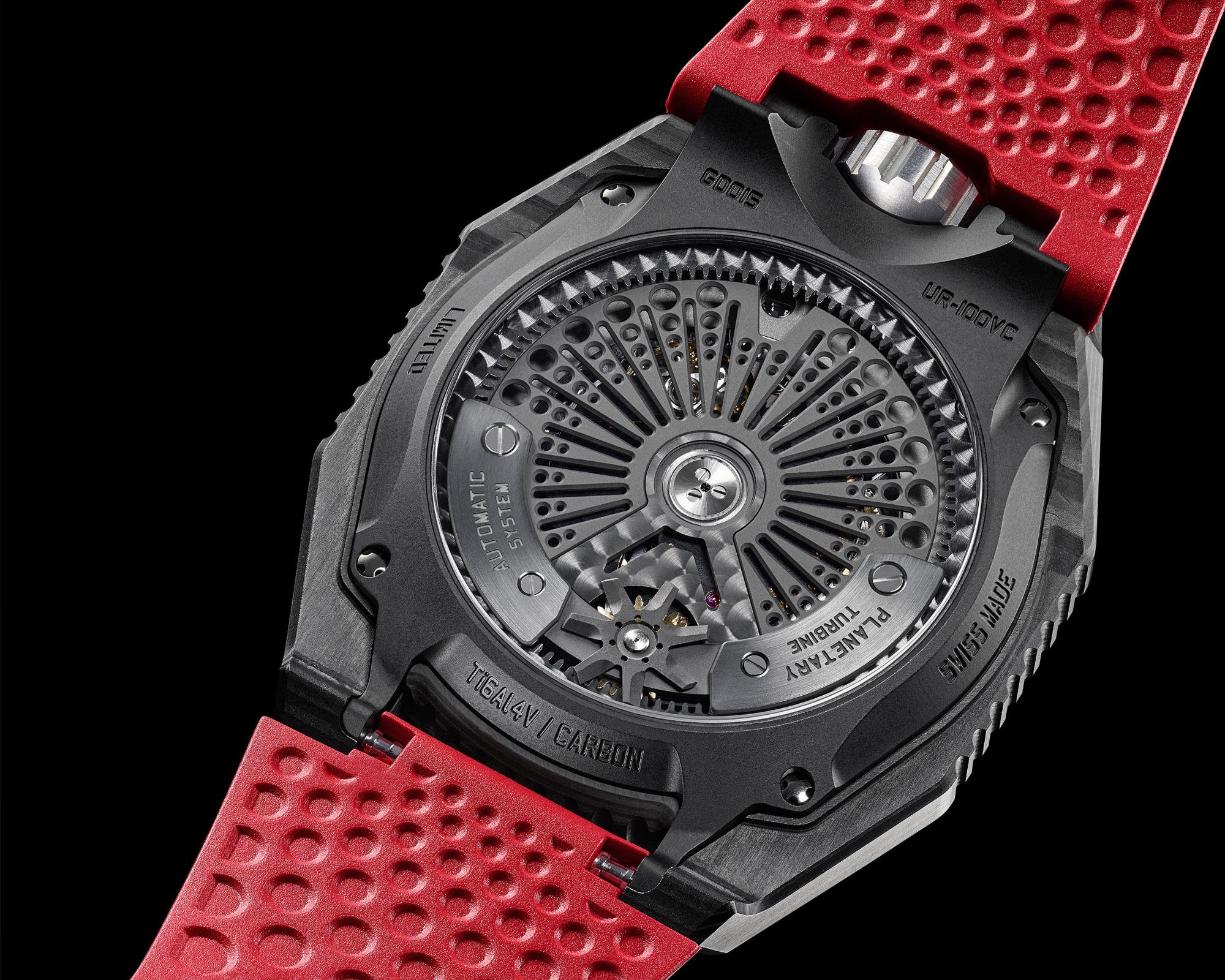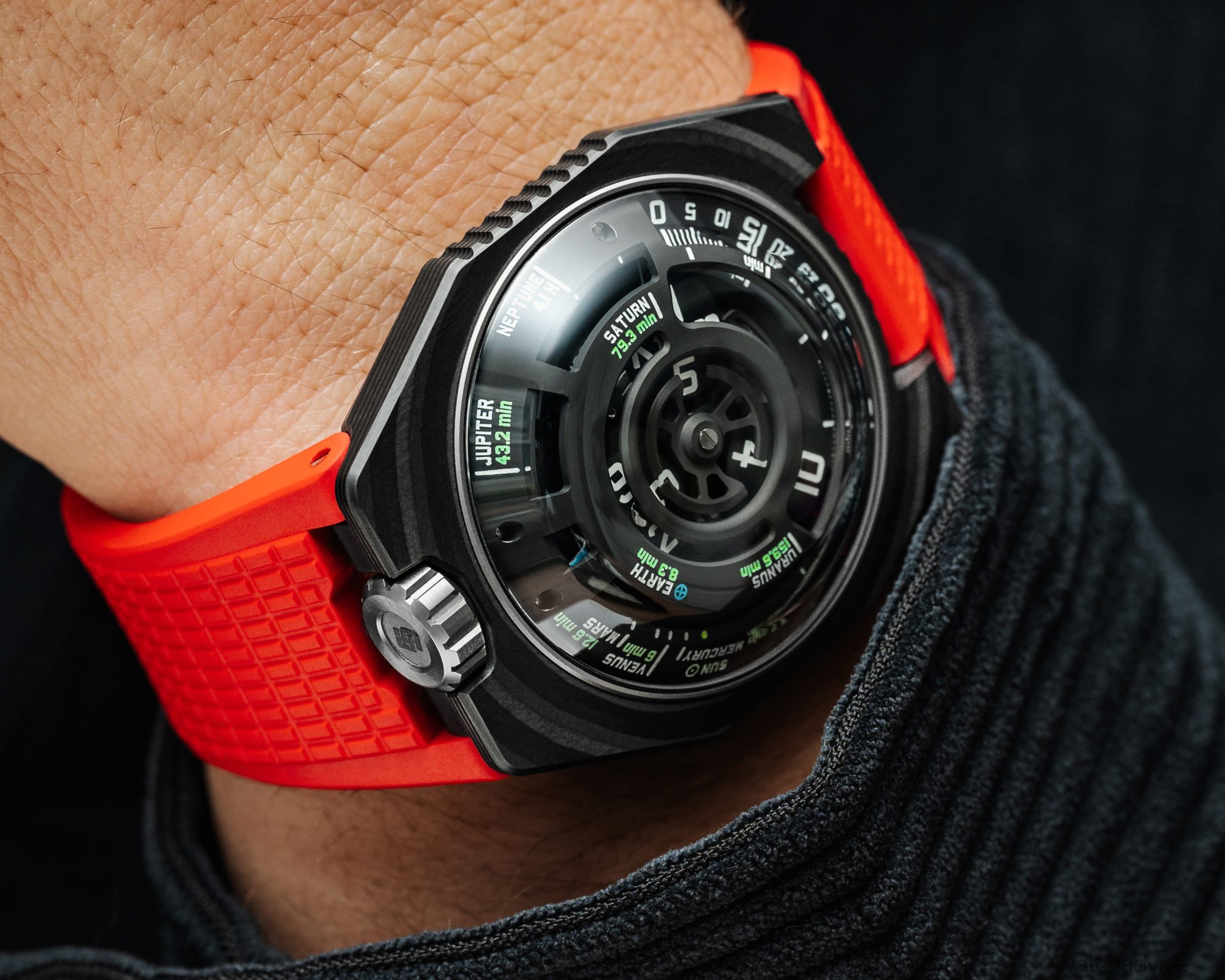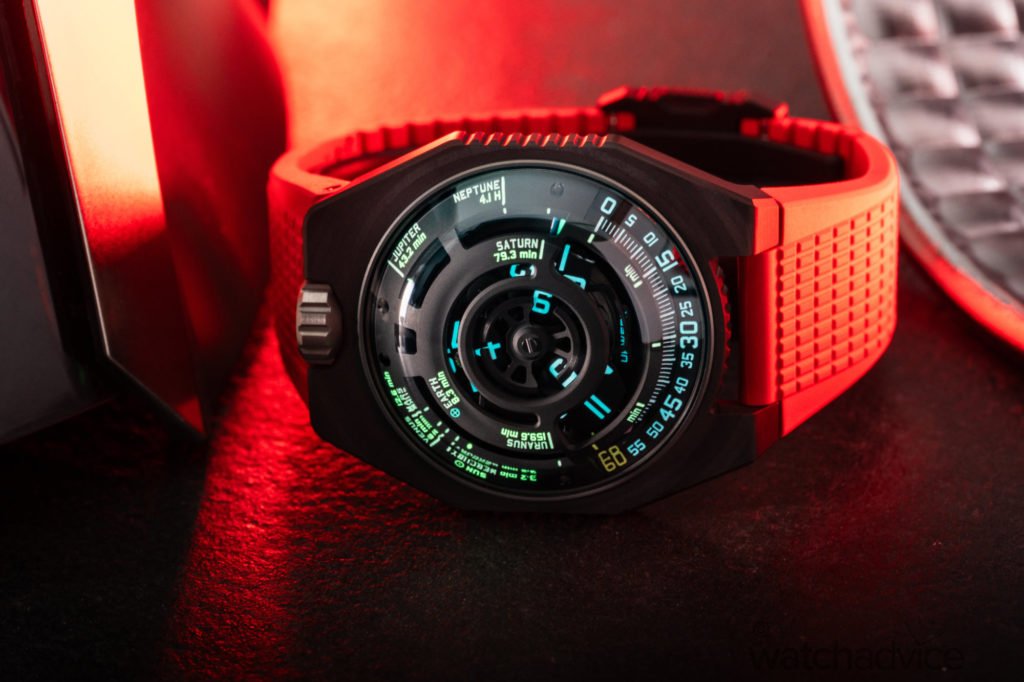I’m sure some of you are familiar with the extremes Urwerk are willing to go to to create their timepieces, but this new piece shifts them straight into maximum overdrive.
A not-too-long time ago, in a country rather far away, enterprising designer Martin Frei and master watchmaker Felix Baumgartner met and clicked instantly. Two years after this monumental meeting of the minds, they founded Urwerk in 1997 to combine tradition with modern design and technology.
This is a rather noble but also equally tedious goal in the watch industry. In the late nineties, it had already become a tired mission statement; Even today, you’ll occasionally find the odd Instagram ad claiming the same things, all while bulk buying from AliExpress and stamping their logo on the front.
However, Felix and Martin are not those people. While their intentions seemed rather plain (in both senses of the word), not one soul could have anticipated how they shook up the world of haute horlogerie. Their goal was not just modernisation – it was innovation, evocation and freedom of expression. They looked to the hypermodern, abstract, and futuristic to see how they could further express the telling of time in a design that was wholly original whilst also being iconic and recognisable.
As a result, Urwerk is never the easiest company to write about when a new timepiece is being released, which is a fact I’m sure they are proud of. Their hypermodern, futuristic approach to things is enough to evoke a strong first impression – usually consisting of the letters W, T, and F in that order. It’s easy for those not well-versed in their design language and technical spirit to get lost in the alarming level of detail put into each piece, whilst missing the historical complication that belies most of their horological efforts.
Wandering hours, otherwise known as satellite hours, is a complication that dates as far back as the 17th Century. Designed to display the current hour as moving along an arc across a minute scale, it became the cornerstone of Urwerk’s quest: To create timepieces infused with both modern technology and traditional watchmaking. From this, the UR-101 and UR-102 were formed, and the rest is history! Well, not exactly…
Ever the vanguards of the unknown, Urwerk has not slowed since. Their ability to take inspiration from anywhere is almost uncanny, having designed timepieces with unconventional historical design cues. Case in point: The UR-100V T-Rex, which hearkened back to prehistoric times by taking inspiration from the infamous King of the Lizards. Now, they look forward to the stars with their newest creation – the UR-100V Lightspeed, a glorious representation of time, space, and the speed of light.
Using the perpetual motion of the cosmos as a base for the timepiece’s artistry, the Lightspeed houses a 3-D planetarium, featuring the celestial bodies of our solar system. This is graphically represented not just by the text depicting the eight planets (sorry, Pluto), but also the minutes it takes for light from the Sun to reach each planet respectively. For example, it takes about 8.3 minutes for the Sun’s light to reach Earth, but a staggering 4.1 hours to reach Neptune. While this may not sound like much in the big picture, keep in mind that light travels at a speed imperceptible to the eye – around 300,000 km per second, so for something so blindingly fast to still take several hours to reach Neptune just puts into perspective just how large not only our solar system is, but the entire galaxy – or perhaps, how small we are.
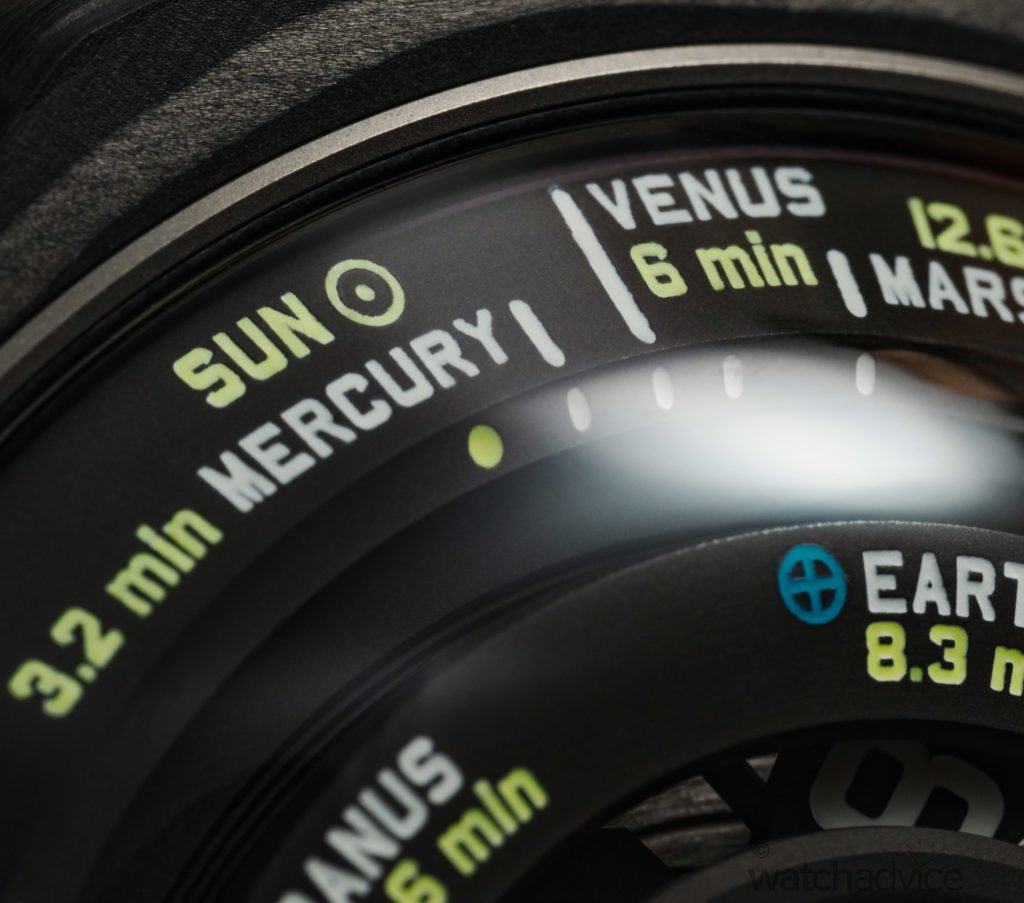
The satellite hours complication seen on the Urwerk only helps to further this borderline existential concept. It’s easy to forget that this watch acts almost like a gateway to displaying the intangible element of time, so watching a physical hour drift from one end to the other on the Lightspeed is rather mesmerising, to say the least. That is if you stare long enough for it to happen.
Of course, the only movement up to the task of carrying this extreme timepiece forward is the automatic UR 12.02 movement, accompanied by a 48 hour power reserve and a “Windfänger airscrew.” I’m not the biggest watch whiz out there (though not for lack of trying), but according to a quick Google search the airscrew is a turbine-like contraption on the back of the movement that helps to regulate the automatic rotor, reducing shock as well as the overall wear and tear on the movement. For something built with such a high level of artistic detail, Urwerk seriously does not mess around in the engineering department.
Speaking of artistic detail, the case of the Lightspeed is a marvel in itself, crafted with precision and attention to detail. Urwerk almost treats their timepieces like a playground for experimentation, and this piece is no exception. 43mm case diameter and an almost 52mm lug-to-lug may seem intimidating to some, but the Lightspeed is built to wear like a dream, utilising both black carbon and grade 5 titanium in its construction. This ensures that almost anyone, budget and steady hands provided, should be able to wear the Lightspeed fairly well.
Final Thoughts
Though the missions remain the same, the intentions, determination and attention to detail always differ. Urwerk is a shinning example of such, having created the Lightspeed as both a love letter to science fiction as well as the final frontier, and flexing their hypermodernist muscles to their limits. The result is a timepiece that not only tells time but serves as a wearable work of art, pushing the boundaries of what a watch can be. A testament to the collaboration between Martin Frei and Felix Baumgartner, they and the Urwerk team have ensured that the Lightspeed is as spectacular on the inside as it is out. I look forward to see how much further they end up propelling both themselves and the world of haute horlogerie further into the uncharted territories – and seeing what wonders they bring back.
Reference: UR-100V “LIGHTSPEED”
Specification:
- Case: 43mm, diameter, 51.73mm lug-to-lug, thickness of14.55 mm
- Case Material: Black carbon (54-layer ThinPly). Caseback in sand-blasted, shot-blasted DLC-treated Grade 5 titanium.
- Dial: Satellite hours in aluminium set on beryllium-bronze Geneva crosses; aluminium carousel; triple baseplates in ARCAP alloy, watertight titanium inner container; black PVD-treated aluminium rotor.
- Crystal: Domed sapphire crystal
- Water resistance: 50m / 5ATM
- Movement: Self-winding UR 12.02 movement governed by a Windfänger airscrew. 40 jewels and beating at 4Hz / 28,000 VpH
- Power reserve: 48 Hours
- Bracelet: Textured rubber with folding clasp


